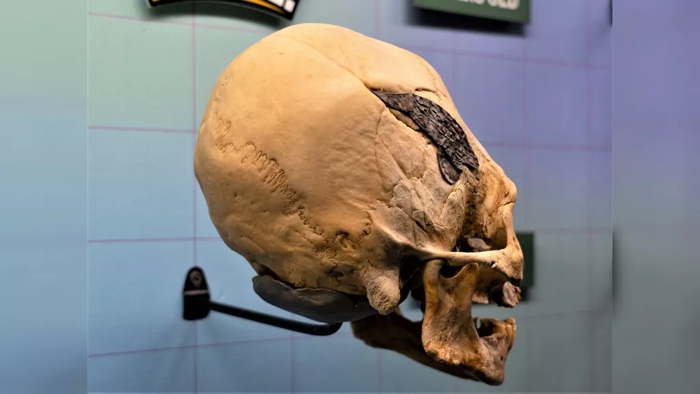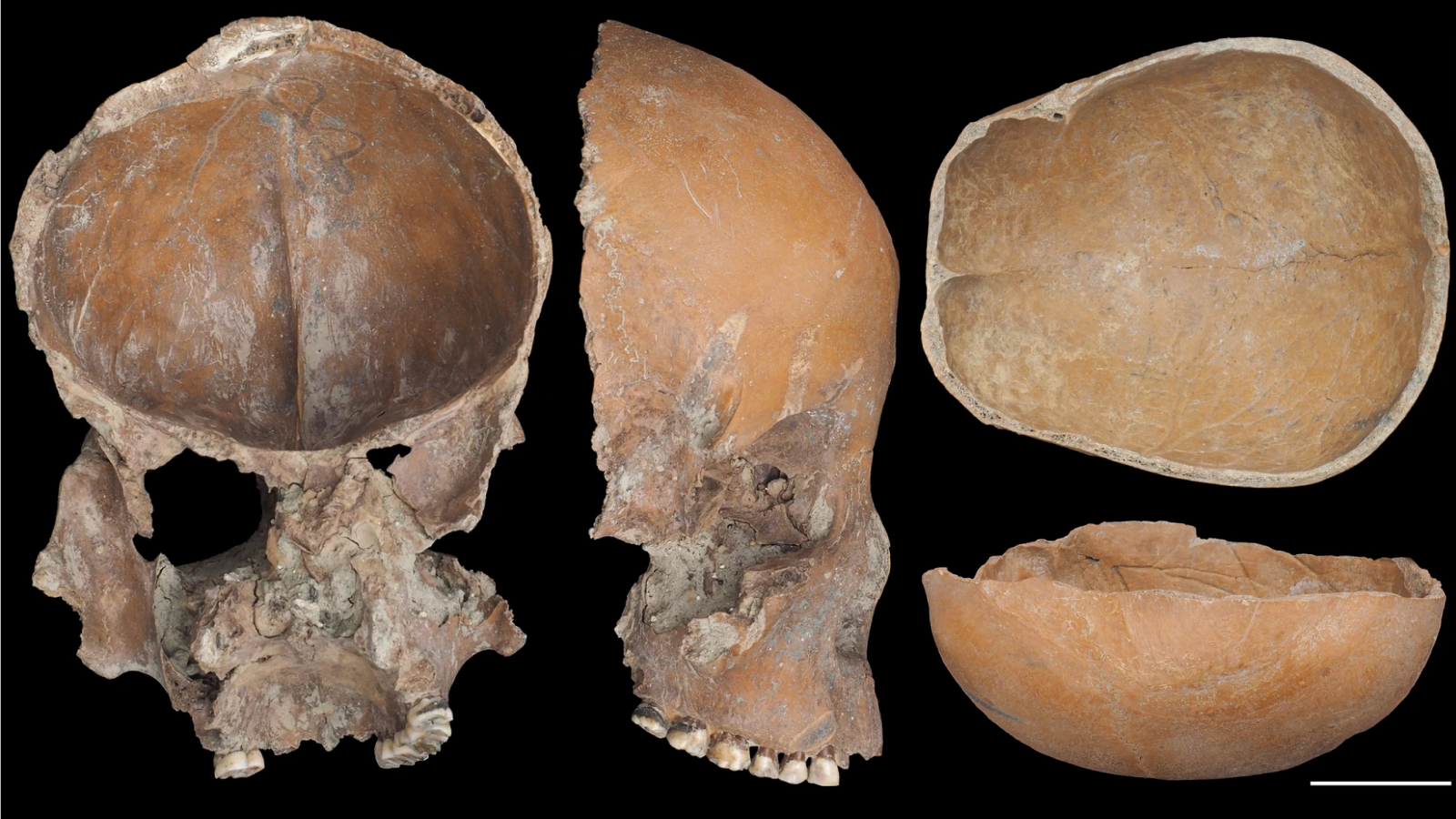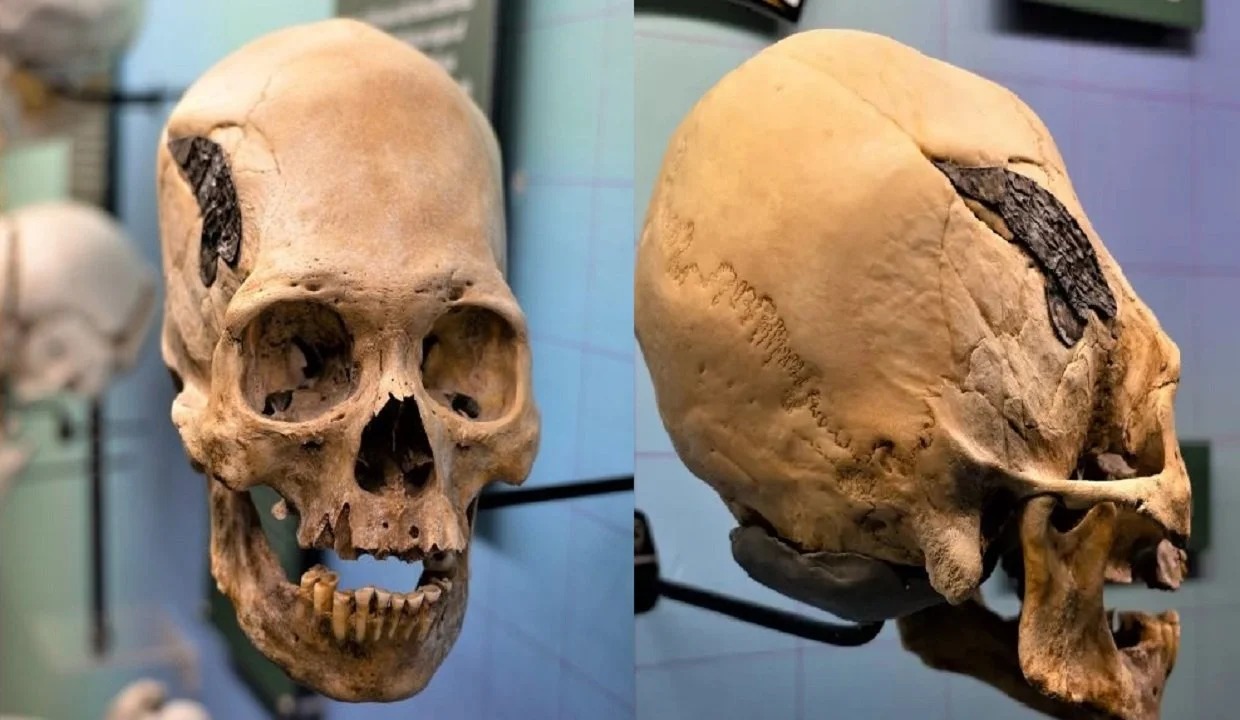A Mysterious Discovery in Oklahoma
At the Museum of Osteology in Oklahoma City, a recent donation has stirred both fascination and skepticism within the scientific community. The object in question — an elongated human skull with what appears to be a metal implant — has prompted debate among anthropologists, archaeologists, and historians around the world.
The skull’s unusual shape and metallic feature have led to two competing theories: that it represents an authentic example of ancient Andean cranial surgery, or that it’s a modern fabrication crafted to enhance its value as a collectible. Until verified through scientific analysis, the artifact remains one of the most puzzling specimens ever to enter the museum’s collection.
Ancient Practice or Modern Hoax?

The elongated shape of the skull is not, in itself, evidence of anything extraordinary. Cultures throughout the Andes — including the Nazca and Paracas civilizations of Peru — practiced intentional cranial deformation, binding infants’ heads during development to create a long, conical profile. This cultural practice, symbolic of status or identity, was well established across pre-Columbian South America.
What makes this skull unusual is the presence of a small metallic plate or patch embedded near a trepanation hole — a circular opening once used in ancient surgical procedures to relieve pressure from head injuries or treat neurological conditions.
If authentic, the metal addition could represent a rare case of early cranial reconstruction, providing tangible evidence of advanced medical knowledge in ancient Peru. Yet, without carbon dating or metallurgical testing, it’s impossible to determine whether the implant is truly ancient or a recent addition.
Divided Expert Opinions

When the Museum of Osteology shared images of the skull on social media, the response from researchers was immediate — and sharply divided.
Some scholars, such as Professor John Verano of Tulane University, believe the artifact is likely a modern forgery. “I think this is something fabricated to make the skull a more valuable collectible,” he stated, noting that previous claims of metal implants in Andean skulls have often proven false after laboratory examination.
However, others see reason for cautious optimism. Professor Danielle Kurin of the University of California, Santa Barbara, observed from photographs that the metal piece appears thinly hammered and shaped to fit precisely over the cranial opening. “It looks like the individual sustained a serious head injury but survived long enough for healing to occur,” she noted — evidence of successful surgery in ancient times.
Both scholars agree on one point: only direct scientific analysis can settle the question.
The Path to Verification

Experts have called for a series of forensic and metallurgical tests to determine the implant’s composition and age. X-ray imaging and 3D scanning would reveal whether the metal covers a trepanation site, while isotopic and elemental analyses could indicate whether the material matches metals known from ancient Peruvian sources such as copper, silver, or gold alloys.
Radiocarbon dating of bone collagen would further help establish when the individual lived. So far, no timeline for testing has been announced, though museum representatives confirm plans for collaboration with academic institutions once preliminary documentation is complete.
Regardless of whether the implant proves authentic or not, the skull itself already offers valuable anthropological insights. The elongated shape, combined with evidence of surgical intervention and post-injury healing, highlights the sophisticated medical and cultural practices of pre-Columbian civilizations in South America.
A Window into Early Medicine
If verified, this skull could join a growing body of evidence suggesting that ancient Andean societies possessed advanced surgical expertise. Archaeological findings from sites in Peru, such as Cusco and Nazca, have revealed skulls with trepanation holes showing clear signs of survival — bone regrowth and smooth edges indicating healing.
Some of these procedures involved covering the opening with organic materials like gourds or thin plates of metal, likely for protection or symbolic reasons. Researchers speculate that such techniques evolved through centuries of trial and observation, making the Andean region one of the earliest centers of neurosurgical experimentation in the world.
The Debate Continues
Until rigorous testing confirms the metal implant’s authenticity, experts remain divided between two narratives — one of archaeological breakthrough, and another of modern embellishment. Yet even skeptics agree that the find, whether genuine or forged, underscores the enduring fascination with ancient civilizations and their medical achievements.
As Professor Kent Johnson of SUNY Cortland notes, “Even if the implant turns out to be modern, the skull itself tells a powerful story. This person survived serious trauma and lived long enough for healing to occur — that alone speaks to remarkable care and resilience.”
Awaiting Answers
For now, the enigmatic skull rests under careful observation at the Museum of Osteology, its mysteries unresolved. It continues to draw visitors, each one wondering whether they are looking at an ancient act of healing or a clever modern imitation.
In either case, the skull has already achieved something rare — it has reignited a conversation about how much we still have to learn from the bones of the past.
Sources
- Smithsonian Magazine – “Ancient Skull Surgery in Peru Reveals Advanced Medical Knowledge”
- National Geographic – “The Prehistoric Surgeons of the Andes”
- BBC – “Why Trepanation Was Common in the Ancient Andes”
- The Guardian – “Ancient Skulls and the Origins of Early Medicine”
